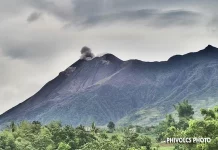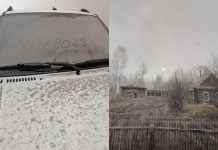Yellowstone is currently a dormant volcano, with low levels of unrest. However, past volcanic eruptions that have taken place at Yellowstone National Park have been global disasters.
Today, scientists are trying to predict how this ticking time bomb will explode—or fizzle out.
Here some interesting images to explain how the Yellowstone supervolcano has evolved over time…
Protect your home and car with the best lightning and EMP shield available…
Yellowstone Caldera
A sleeping giant is nestled in the western part of the United States. Though it stirs occasionally, it has not risen from slumber in nearly 70,000 years. But when it finally awakes it may roar and heave with unprecedented force.
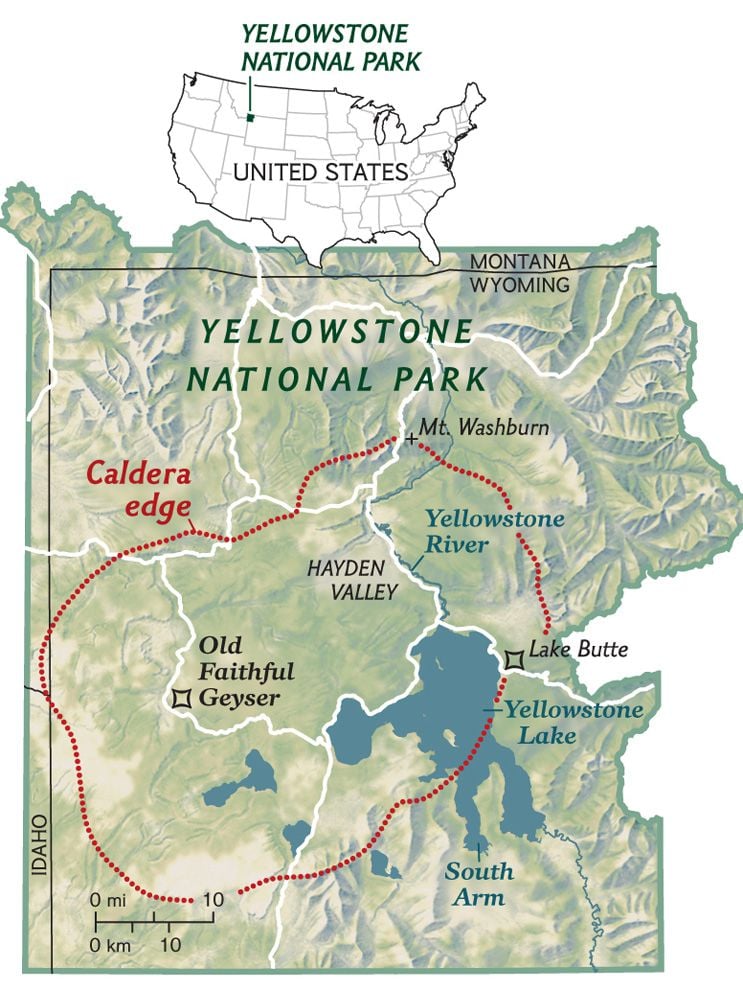
This giant is the “supervolcano” that lies beneath Yellowstone National Park, the wildlife and forest preserve positioned on a sprawling expanse that extends through the states of Wyoming, Idaho, and Montana. The volcano itself is actually located in northwestern Wyoming, which is where the bulk of Yellowstone is contained.
Filter your polluted drinking water at home NOW…
Steam Vent at Yellowstone
Officials of the United States Geological Survey (USGS) say a massive eruption like the last one is an unlikely scenario. In fact, officials at the Yellowstone Volcano Observatory say the most likely activities that might take place in the future are hydrothermal explosions (eruptions of steam and hot water, rather than molten rock) or lava flows.

Although lava flows are a type of magmatic eruption, they are not as devastating as the caldera-forming explosions. Instead of instant destruction, lava flows slowly ooze out of the ground over a period of days, months, or even years.
Health Ranger Store: Best place to buy Clean Food to heal the world…
Old Faithful
They are also relatively rare. The last Yellowstone lava flows took place about 70,000 years ago. Yet even today, hikers can see evidence of those eruptions in the form of distinct rock layers along the park’s trails. Some evidence of younger lava flows can be found near the cliffs surrounding the Upper Geyser Basin, near Old Faithful.
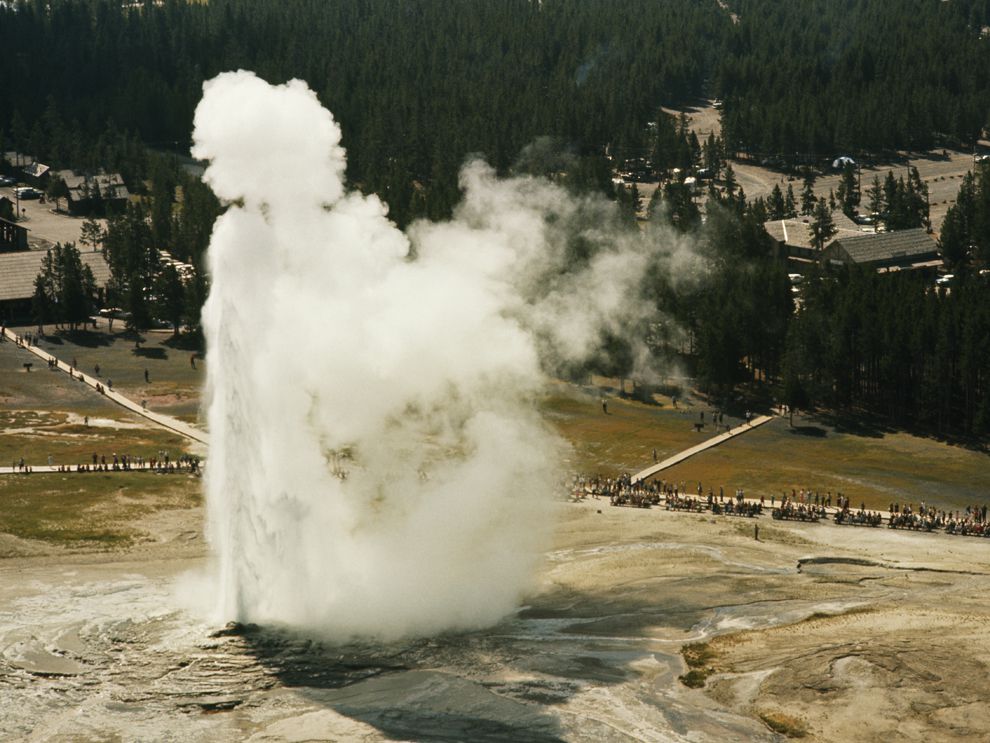
PHOTOGRAPH BY DEAN CONGER, NATIONAL GEOGRAPHIC
Today, Yellowstone sleeps, with scientists checking its every hiccup or cough in an effort to predict its next move. While the brewing force beneath the park has been restrained for thousands of years, Yellowstone’s dormancy does not mean it will not one day awaken. The question remains: When and with what force?
Prepare your retirement by investing in GOLD, SILVER and other PRECIOUS METALS…
Sleeping Giant
Thousands of years ago, the last blast from the Yellowstone supervolcano shot a fatal plume of hot ash, molten rock, and lethal gases thousands of meters into the air. A third of the continent was likely plunged into complete darkness. Pyroclastic flows (fast-moving currents of hot, dry rock fragments and gases) raced along the region at alarming speeds, burying or shattering anything in their path. Magma spewing out of the ground charred the once-charming landscape for kilometers.

ILLUSTRATION BY HERNAN CANELLAS, NATIONAL GEOGRAPHIC
Some evidence of the last eruption can be found in the Yellowstone caldera itself, 50 kilometers (30 miles) wide and 70 kilometers (45 miles) long. The thick volcanic debris that remained after the eruption can still be seen in an area referred to as the Lava Creek Tuff.
Yellowstone Magma Plume
The ground above the Yellowstone supervolcano sits on a hot spot made of molten and semi-molten rock called magma. As magma feeds into a magma chamber, or reservoir situated about 6-10 kilometers (4-6 miles) beneath the park, the ground swells. When the magma begins to solidify and cool, the ground falls.
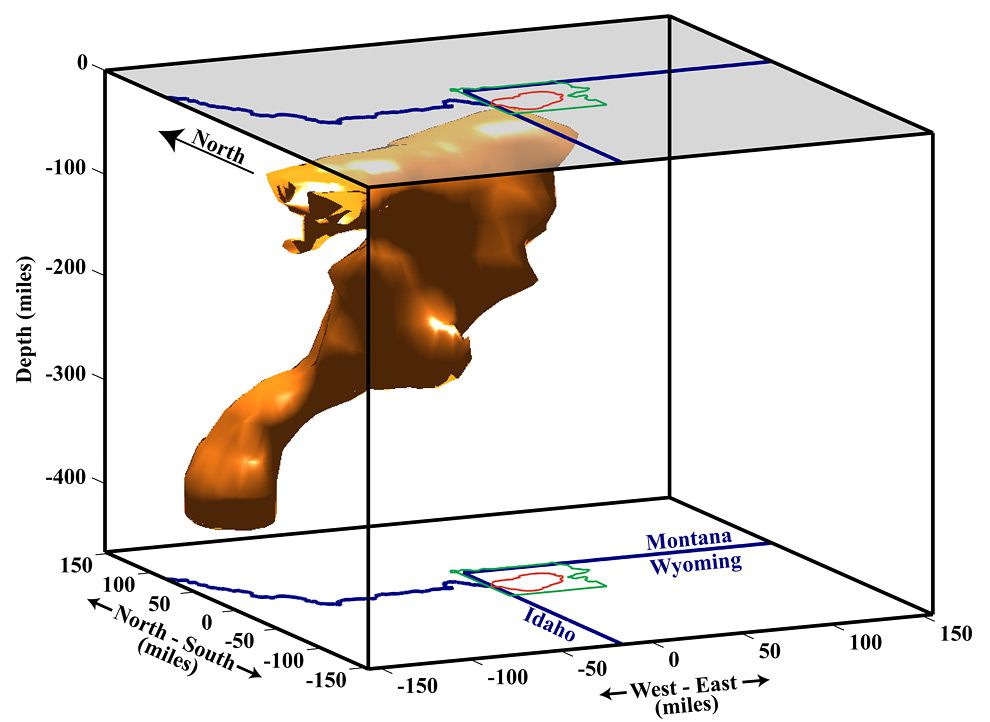
Volcanologists, who have been measuring this activity since 1923, say the ground rose about 25 centimeters (9.8 inches) between 2004 and 2009. However, in 2010 the land began to subside.
You will ALWAYS have electricity with this portable SOLAR power station…
Line of Fire
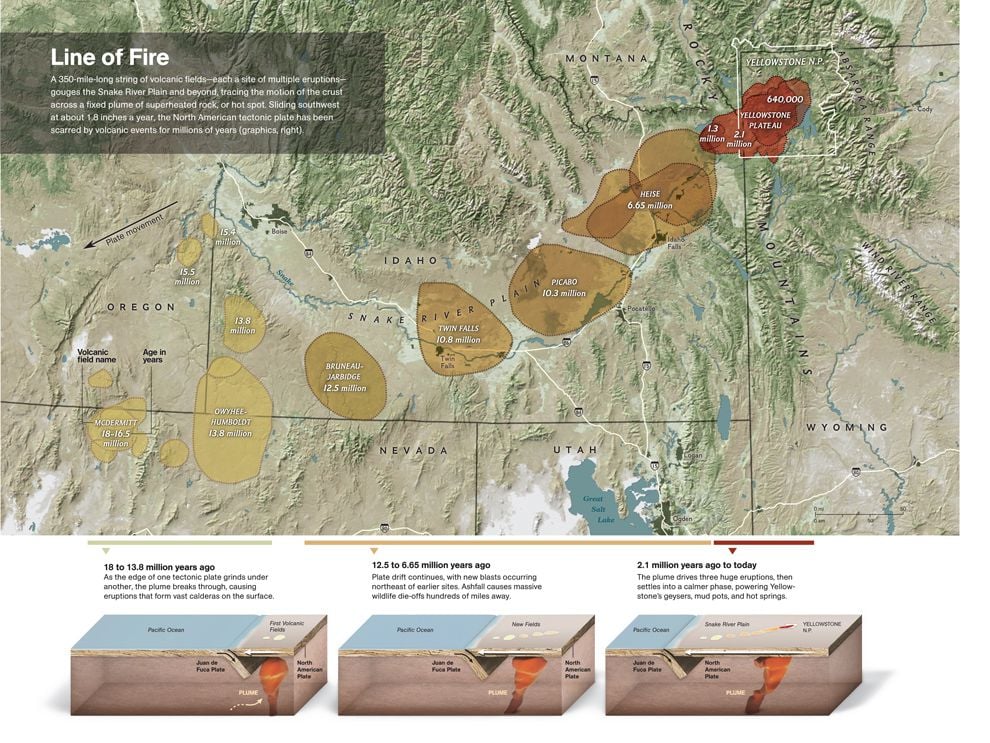
MAP BY ALEJANDRO TUMAS
Yellowstone Eruptions
Examinations of the volcano’s distant past do provide something of a clue. Geologic evidence suggests that Yellowstone has produced three colossal eruptions within the past 2.1 million years. Volcanologists say the eruptions occurred at gaps of about 600,000 to 800,000 years. Evidence from the last big event, estimated to have to been about 640,000 years ago, is sprawled throughout the park and across thousands of kilometers of the surrounding landscape.
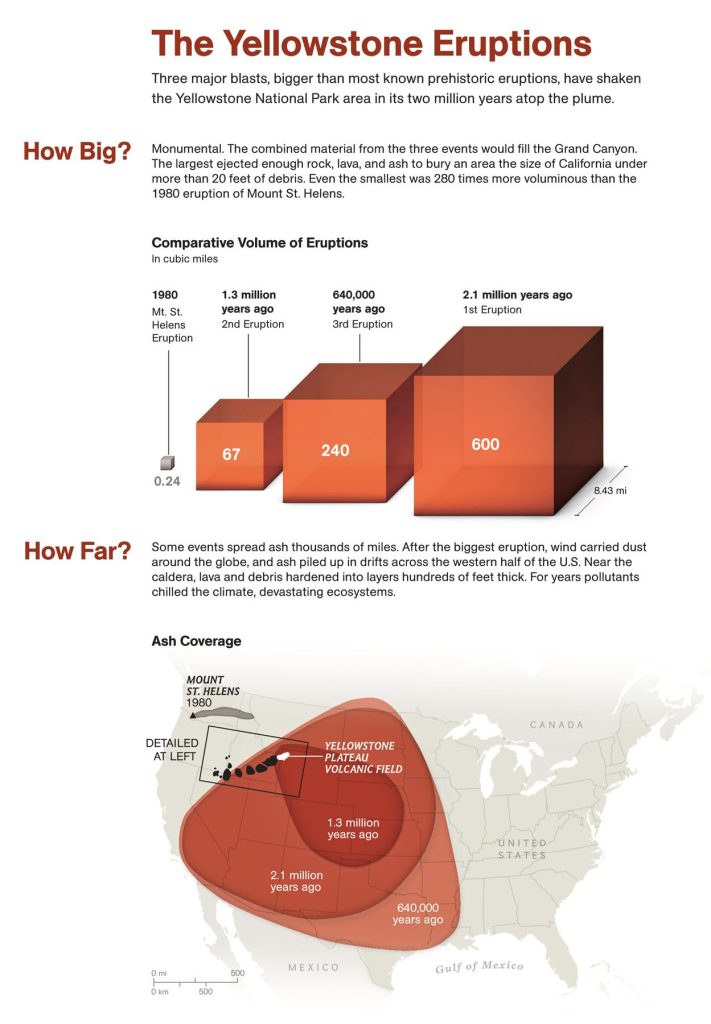
Each of the previous eruptions spewed enormous amounts of volcanic ash, gas, magma, and other volcanic debris that covered most of the continental U.S. Some material has been found as far away as Louisiana.
After each of these eruptions, the Yellowstone supervolcano collapsed on itself, sucking in trees, mountains and everything else in the landscape. The depression formed by this phenomenon is called a caldera. (In fact, the Yellowstone supervolcano is also called the Yellowstone caldera.) A caldera-forming eruption would create a massive natural hazard in Yellowstone.
Scientists say the last Yellowstone eruption was 1,000 times greater than the notorious 1980 Mt. Saint Helens eruption that killed 56 people and thousands of animals, and scorched hundreds of square kilometers of land in Washington and Oregon.
Meanwhile, the level of recent underground activity fuels speculation about the intensity of an eruption. Within the past decade, the volcano has continued to rise at the fastest rate ever recorded.
Yellowstone also averages between 1,000 and 3,000 earthquakes a year. Most are virtually unnoticeable, with a magnitude of three or less. Still, these quakes give scientists insight into just how fast the magma chamber beneath the park is filling up. An increase in the shaking and rattling throughout the park might indicate a fresh batch of magma was recently fed into the reservoir.
Even with the increase in temblors, scientists don’t think the rumblings in the magma chamber pose a threat anytime soon. However, since people haven’t been around to analyze absolutely everything that happens in Yellowstone, it’s hard to predict what exactly is going on, making it difficult for geologists to predict Yellowstone’s next move. So always be ready!!! [Nat Geo]
StrangeSounds.org is now running ad-free CLICK HERE TO SUPPORT MY WORK…
Things to add to your disaster & preparedness kit:
- Protect your home and car with the best lightning and EMP shield available…
- Drink clean water at home… Get this filter now…
- Health Ranger Store: Buy Clean Food and Products to heal the world…
- Prepare your retirement by investing in GOLD, SILVER and other PRECIOUS METALS…
- You will ALWAYS have electricity with this portable SOLAR power station…
- Qfiles is another great site for alternative news and information…



